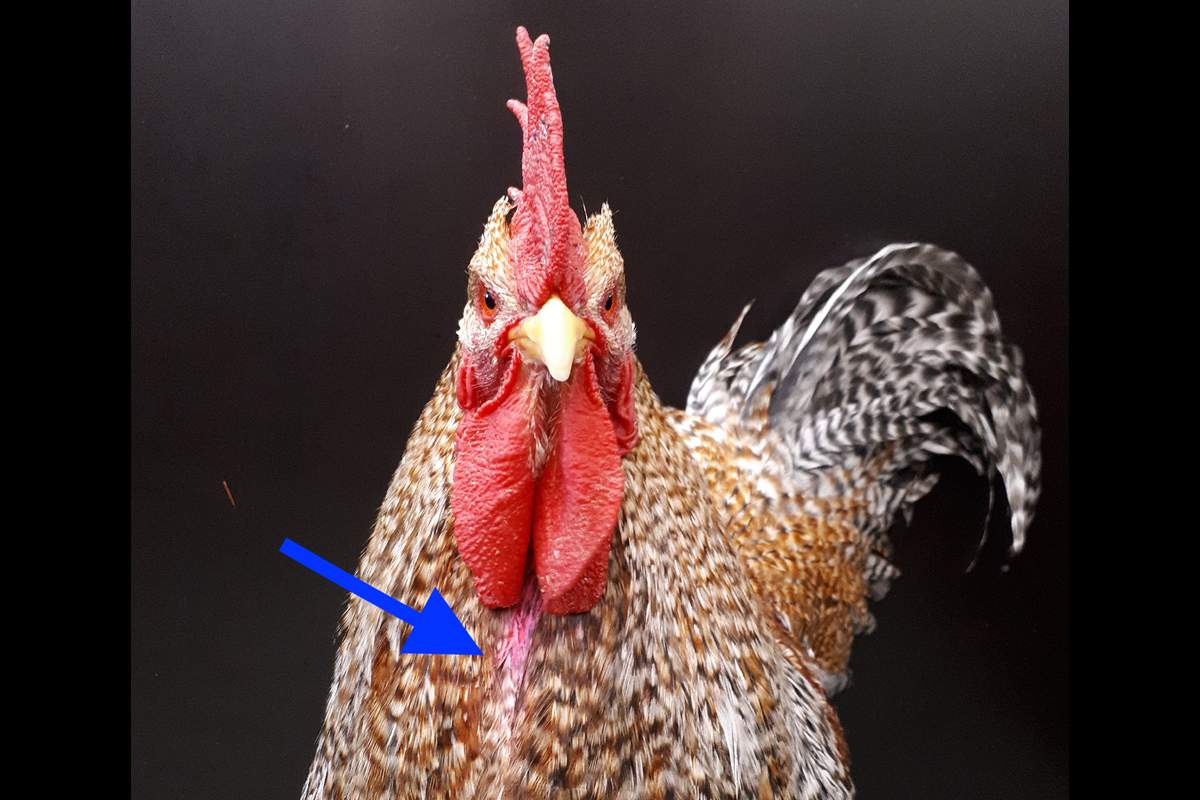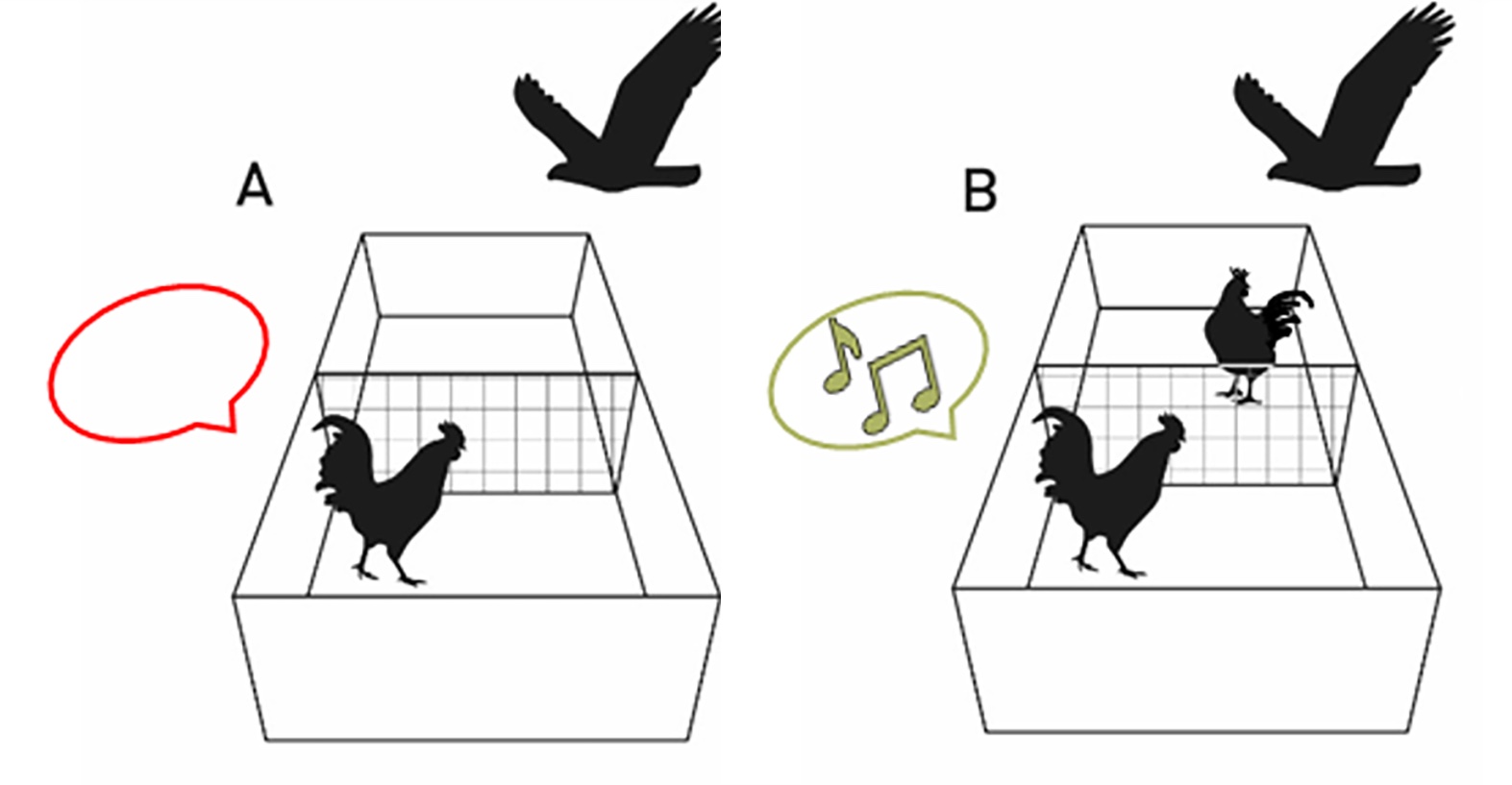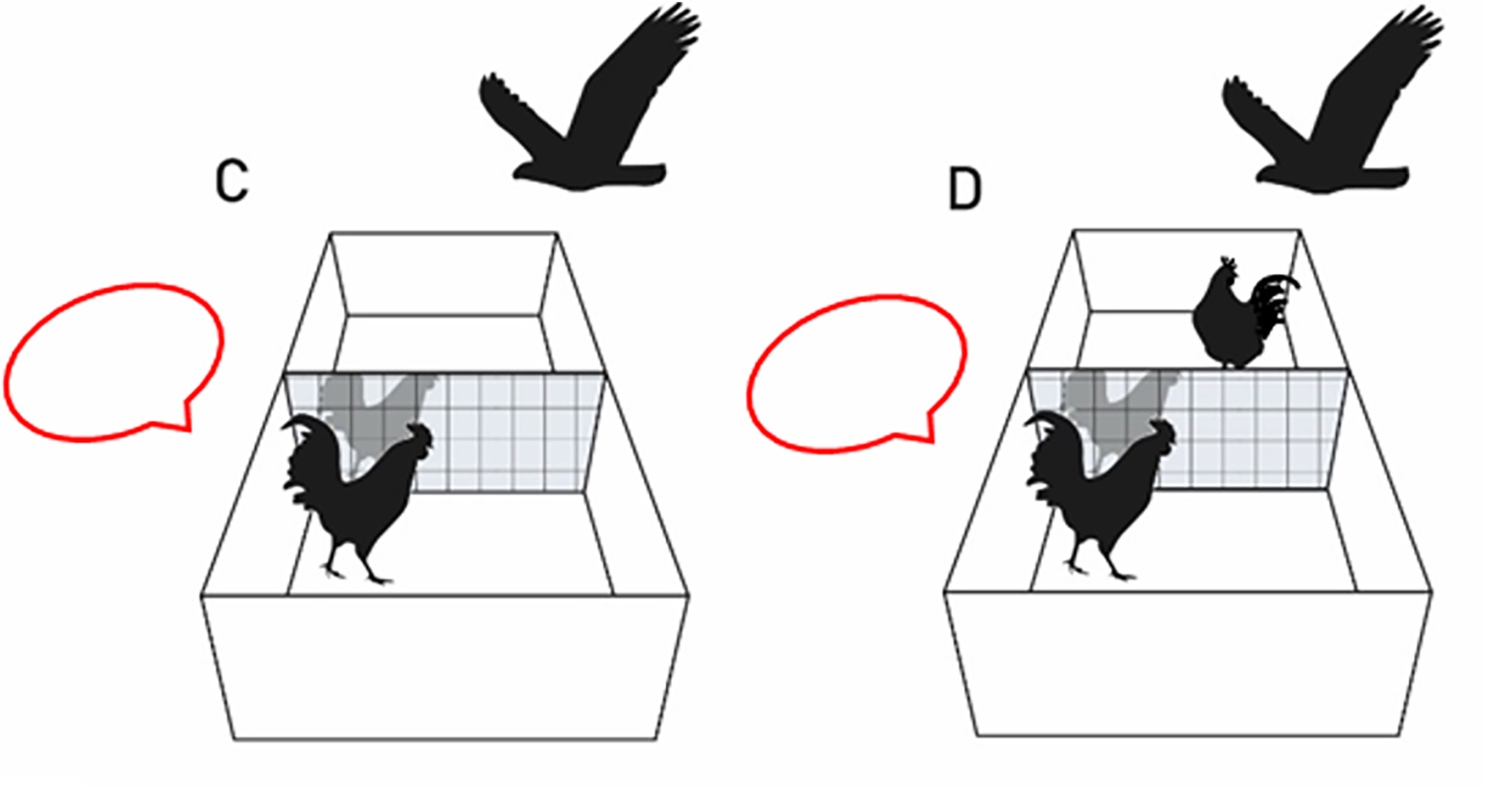A new study suggests that roosters can recognize themselves in a mirror. The news came after roosters failed scientists’ usual test for this. The surprising result raises questions not just about how smart roosters are, but about how scientists test animal intelligence.
The “mark test” (or “mirror test”) is a way to test whether an animal can recognize itself. A mark is put on an animal, usually in a spot that can only be seen with a mirror. Then the animal is allowed to look in a mirror. If the animal seems to pay attention to the mark, scientists believe the animal has recognized itself (and knows that the mark shouldn’t be there).

(Source: Adapted from roseoftimothywoods [CC BY 2.0], WikimediaCommons.org.)
The mark test is often seen as a good way to learn if an animal is aware of itself – one sign of how smart an animal is. The list of animals who can recognize themselves in a mirror isn’t long. The skill has mainly been found in animals with large brains, like dolphins, chimpanzees, and elephants. Until recently, only one kind of bird had passed the test.
But some scientists believe the mark test doesn’t work well for all animals. Roosters are a good example. Scientists at the University of Bonn in Germany recently ran the mark test on roosters. They put a pinkish triangle on the chest of the roosters. But when the roosters looked in a mirror, they didn’t seem to notice the mark.
The scientists needed a different way to test whether the roosters could recognize themselves.

(Source: Adapted from Hillemacher, et al., [CC BY 4.0], PLOS One.)
When there’s danger – like a hawk flying above – roosters make loud calls to warn nearby chickens. But roosters only make the cries if other chickens can hear them. If they’re alone, they remain quiet so the hawk won’t see them.
The scientists realized that they could use the shadow of a hawk to test whether or not the roosters thought they were alone – even when they could see “another” chicken in a mirror.
First, the scientists let the roosters spend time getting used to being in a closed-in space and having a mirror around. Then, they ran several tests by making a hawk shadow appear above the bird and watching how the rooster reacted.

(Source: Adapted from Hillemacher, et al., [CC BY 4.0], PLOS One.)
When there was no mirror, the roosters reacted as usual. They called out when they were near another rooster, but remained quiet when they were alone.
But when a rooster was in a space where it could see itself in the mirror, it wasn’t fooled into thinking there was another rooster. It remained silent despite the hawk shadow. It did this even if there was a rooster hidden behind the mirror.

(Source: Adapted from Hillemacher, et al., [CC BY 4.0], PLOS One.)
The scientists say the results show that the roosters knew they were seeing themselves in the mirror, and not other roosters. That suggests that the mark test may not be a good test of whether an animal can recognize itself.
The scientists hope their results will encourage other scientists to look for better ways of testing self-recognition in animals. It may turn out that some kinds of animals are more intelligent than people thought.
Did You Know…?
The scientists believe that the test results would have been just the same with female chickens. But the scientists chose to work with roosters because they’re better at warning others.
